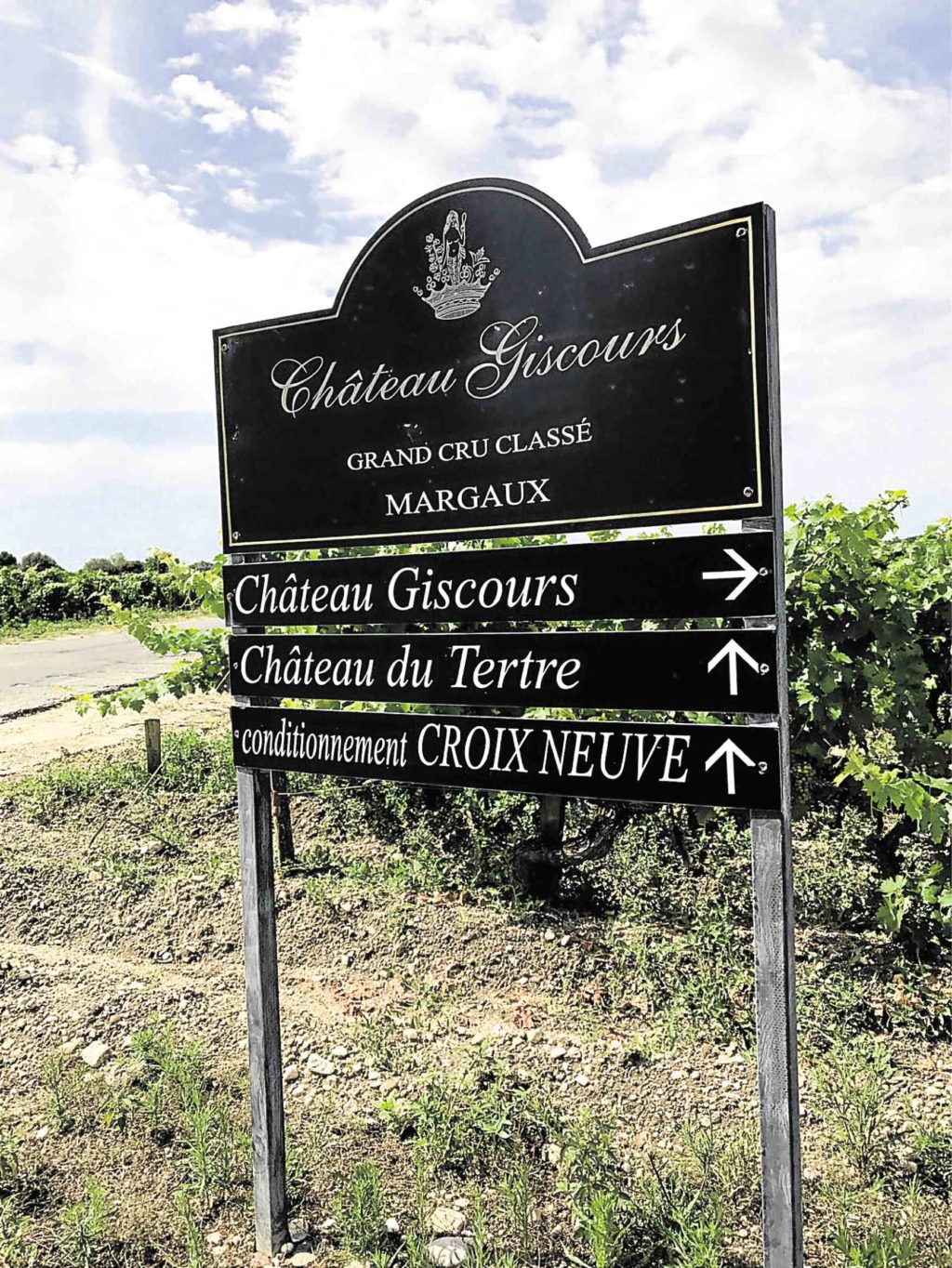How wine is made—and it’s not pressing grapes by foot

On this table at Chateau Giscours, critics get to taste wines before the bottles are even labeled and predict the quality of the vintage. —PHOTOS BY MARGAUX SALCEDO
Chateau Giscours produces around a million bottles of wine a year.
“Wow,” we gushed to our charming Chateau Giscours guide, Elisa, as she toured us around the place.
“With 300 hectares of land and an additional 150 hectares just for vines, [Chateau Giscours] represents 10 percent of the Margaux region,” Elisa said.
One would think that with that level of production, the company would be prone to sacrificing a little quality for the sake of producing target numbers. Not Giscours.
Giscours being a 3rd Grand Cru Classe in the Bordeaux Wine Classification of 1855 (the bible of all wine makers and wine lovers), workers at the chateau can confidently assure each drinker that first, the soil on which the grapes were planted is excellent; second, an exceedingly tedious process is followed to ensure the Giscours quality of wine in each bottle.
When you drink wine, thanks to old “I Love Lucy” shows and some cartoons, you think that all that went into making it was pressing grapes with your feet. But the process is way more complicated than that.
First, there is an analysis of the soil. The quality of the soil at Chateau Giscours forces the vines to struggle, resulting in great produce. The grapes are then hand-sorted come harvest season, which is around September to October.
A second sorting is done, by means of an optical grape sorter that scans each grape to determine if it meets the company’s desired quality in terms of shape, color, maturity and size. Usually, around 10 percent of the grapes don’t meet the standards and are rejected. These are then separated to be used for compost.
The successful grapes are then placed in large containers, lifted by forklift and then situated in such a way that the grapes would fall naturally, by sheer force of gravity, into temperature-controlled tanks. Then, the chosen grapes go through an extraction process followed by masseration, a process where the color, flavor and tannins are transferred from the grape skins to the wine juice.
It’s a very long process. That is why you will very rarely, if at all, come across a vintage of wine being sold in Manila that is the same year as the present. While the year on the bottle is the year of picking, the grapes still go through sorting, vinification, aging in barrels, and bottle labeling before finally being transmitted to distributors around the world and made available for sale to the public.
“And then you have to wait another 10 years to drink the bottle!” Elisa pointed out, laughing.
At the end of the tour of Chateau Giscours and its neighboring Chateau Du Tertre (same owner), we were able to try the still publicly unavailable 2016 vintages of both chateaux. The year 2016, the guides explained, was a surprisingly excellent year, professionally described as an exceptional vintage.
The 2016 Chateau Giscours surprised everyone with its 80-percent cabernet sauvignon. It is the first time that there is such a high percentage of the cab sauv (same with the Du Tertre, which has 75-percent cab sauv). But the result is a wine with an amazing aroma and hints of great body at this early stage, although it needs more time in the barrel.
The attention to detail that the wine growers follow in this area is truly impressive.
So the next time you drink a bottle of red, try to get past your goal of simply getting inebriated. Savor the flavor, savor the tastes. Much work was done to create the contents of that bottle.
Chateau Giscours. 10 Route de Giscours, 33460 Labarde.
















